For those enchanted by historical sites exuding ancient charm and rich cultural heritage, a visit to Duong Thuong Assembly Hall is an absolute must. This new gem on the tourist map of Hoi An offers picturesque backdrops for your Instagram feed and an immersive experience of the time-honored traditions and spirit of the Chinese community that has thrived here for generations.
Steeped in nostalgia, Duong Thuong Assembly Hall in Hoi An has become a cherished destination for intrepid travelers and culture enthusiasts alike. When exploring Hoi An, be sure not to overlook this captivating spot, where you can delve deeper into the unique customs of the Chinese diaspora nestled in this picturesque corner of Hoi An. For those seeking more insights into Vietnam’s rich cultural heritage and travel tips, websites like Vietnampeace.com serve as invaluable resources to enhance your journey.
1. Introduction to Duong Thuong Assembly Hall
Historical accounts trace the origins of Duong Thuong Assembly Hall back to around 1741. Despite the passage of nearly 300 years, the assembly hall still boasts its distinctive Chinese architectural style, preserving the essence of its early days despite undergoing several renovations and repairs.
1.1 Location of Duong Thuong Assembly Hall
Nestled at 64 Tran Phu Street, Hoi An, Quang Nam, Duong Thuong Assembly Hall enjoys a prime location near other renowned tourist attractions in Hoi An, such as Triều Châu Assembly Hall, Quang Dong Assembly Hall, Ong Pagoda, and Hoi An Market. This makes it an ideal stop for sightseers and explorers alike.
1.2 Deities Worshiped at Duong Thuong Assembly Hall
The hall pays homage to Thien Hau Thanh Mau, a revered Chinese goddess known for her protective blessings over seafarers and merchants, ensuring smooth voyages and prosperous trade. Additionally, the Duong Thuong Assembly Hall venerates other significant deities in Daoism and Chinese mythology, including Thiên Lý Nhãn, Thuận Phong Nhĩ, and Tài Bạch Tinh Quân.
1.3 Historical Background of Duong Thuong Assembly Hall
Established through the contributions of merchants from the Five Ports, namely Triều Châu, Phúc Kiến, Gia Ứng, Quảng Đông, and Hải Nam, Duong Thuong Assembly Hall has witnessed two major renovations, in 1855 and 1928. In 1855, it was renamed Trung Hoa Assembly Hall, a title engraved above the main entrance to this day. Over the years, the assembly hall underwent several name changes, including Giang Triết Assembly Hall, Trung Hoa Assembly Hall, and Lễ Nghĩa Temple – a place for cultural and language education for the descendants of Chinese families.
To this day, Duong Thuong Assembly Hall continues to serve as a hub for the Chinese community to gather, worship, and socialize. Its presence, along with other assembly halls, has significantly enriched the cultural fabric of the Chinese community and the ancient town of Hoi An, contributing to its status as a renowned tourist destination that captivates locals and foreigners alike.
2. Exploring Duong Thuong Assembly Hall in Hoi An with 3 Exciting Experiences
If you ponder what to do or where to go while here, let’s delve into three incredibly enticing experiences when you visit this oldest assembly hall in Hoi An.
2.1 Discovering the Unique Architecture of Duong Thuong Assembly Hall
The architecture of this assembly hall resembles that of ancient Chinese assembly halls. Its distinctive feature combines Chinese architectural elements with some decorative details inspired by Hoi An’s ancient town.
Duong Thuong Assembly Hall is structured in a “Quoc” shape, comprising the Antechamber (front hall), Main Hall, Left Chamber, and Right Chamber.
The Antechamber consists of 3 sections, characterized by towering wooden columns. The central entrance to the assembly hall is located here, adorned with a stone horizontal plaque inscribed with “Trung Hoa Hoi Quan” (Chinese Assembly Hall), and behind it, another plaque inscribed with “Thien Ha Vi Cong” (Heaven and Earth are Harmonious).
As you step into the Antechamber, you’ll be mesmerized by the intricately carved dragon motifs adorning the faux wooden beams, showcasing exquisite craftsmanship. Beyond the Antechamber lies a spacious courtyard adorned with lush greenery, providing a serene and peaceful atmosphere for visitors.
On the eastern and western sides of the central courtyard are the Left and Right Chambers, traditionally used for teaching the Chinese language to the descendants of the Chinese community. Connected to the Antechamber by the Left and Right Chambers is the Main Hall of the assembly hall – the place of worship for Thien Hau Thanh Mau and other deities revered in Chinese spirituality and beliefs.
Here, you’ll be awestruck by the majestic wooden framework of the Main Hall, meticulously painted and adorned, exuding grandeur and solidity. The altar of Thien Hau Thanh Mau is prominently displayed in the center of the Main Hall for visitors and worshippers to offer incense and pay their respects.
2.2 Checking in at Duong Thuong Assembly Hall with Stunning Backgrounds
Don’t be fooled into thinking that Duong Thuong Assembly Hall is merely a visitor’s gathering place for the Chinese Colso. It offers numerous picturesque spots for photo enthusiasts to capture stunning images.
One such spot is the Le Nghia basketball court – a trending photo hotspot on social media that has been buzzing with activity lately. Located in the rear area of the assembly hall, this basketball court boasts a nostalgic schoolyard vibe reminiscent of old times.
Another highlight is the gigantic Chinese character wall – one of the hottest check-in spots in Hoi An right now. Standing next to this wall guarantees a fantastic photo, making it seem like you’re exploring an ancient Chinese fortress.
2.3 Participating in the Bà Thiên Hậu Hoi An Festival
If you happen to be in Hoi An on the 23rd of the 3rd lunar month, you can attend the Bà Thiên Hậu Hoi An Festival organized by Duong Thuong Assembly Hall and Phuc Kien Assembly Hall. This festival commemorates and honors a critical spiritual figure in the Chinese community’s spiritual life.
The festival consists of two parts: the ritual ceremony and the festival. During the ritual ceremony, a notable event is the statue bathing ritual, symbolizing the cleansing of time’s dust and the donning of new attire.
Following this is the vegetarian offering ceremony, where worshippers present a variety of delicacies representing the finest culinary offerings, such as roast pork, fish, meat, eggs, Phuc Kien steamed buns, stir-fried Phuc Kien noodles, and various other delicacies, as a gesture of gratitude.
The traditional festival concludes with the festive part, the most eagerly anticipated segment for visitors. Here, locals and tourists partake in cultural and artistic activities such as lion dances, cultural performances, and festive feasts, creating a lively and pleasant atmosphere.
3. Detailed Tips for Visiting Duong Thuong Assembly Hall
3.1 Directions to Duong Thuong Assembly Hall in Hoi An
Duong Thuong Assembly Hall is conveniently located in the heart of Hoi An’s ancient town, at 64 Tran Phu Street, making it easily accessible. From the Hoi An bus station, you can take Huynh Thuc Khang Street to Nguyen Thi Minh Khai Street, pass by the Japanese Covered Bridge, and then proceed to Tran Phu Street. After approximately 1.5km, you’ll reach the intersection of Tran Phu and Hoang Van Thu Streets, where the historical site is situated.
The route to the assembly hall is relatively straightforward, allowing you to choose various modes of transportation, such as walking, driving, or riding a motorbike, depending on your preferences and schedule.
3.2 Ticket Prices and Opening Hours of Duong Thuong Assembly Hall
Duong Thuong Assembly Hall welcomes visitors daily from Monday to Sunday. Currently, the assembly hall offers free admission, so tourists should seize the opportunity to explore this fascinating attraction.
3.3 Some Considerations When Visiting Duong Thuong Assembly Hall
- You can visit Duong Thuong Assembly Hall at any time of the year. However, the best time to visit is from February to August when the weather is cool and dry, ideal for sightseeing. This period coincides with numerous festivals and cultural events in Hoi An.
- The assembly hall is open from 5:30 AM to 5:30 PM, so plan your visit accordingly to ensure you have enough time for exploration and photography.
- As a sacred space, visitors should be mindful not to disturb the order or push or touch the displayed artifacts.
- Although admission to the assembly hall is free for tourists, admission policies may change over time. Therefore, it’s advisable to check beforehand for the most up-to-date information and make necessary preparations before your visit.
In conclusion, a visit to Duong Thuong Assembly Hall in Hoi An promises an enriching experience steeped in history, culture, and spirituality. From exploring its unique architecture to capturing stunning photographs against its picturesque backgrounds, there’s much to discover and appreciate at this revered site. Additionally, participating in festivals like the Bà Thiên Hậu Hoi An Festival provides a deeper insight into the local traditions and customs.
For travelers seeking detailed information and further guidance on exploring Vietnam’s cultural treasures. Whether planning your itinerary or seeking to delve deeper into Vietnam’s rich heritage, Vietnampeace.com is a trusted companion, ensuring a memorable and fulfilling journey through the country’s diverse landscapes and historical sites.
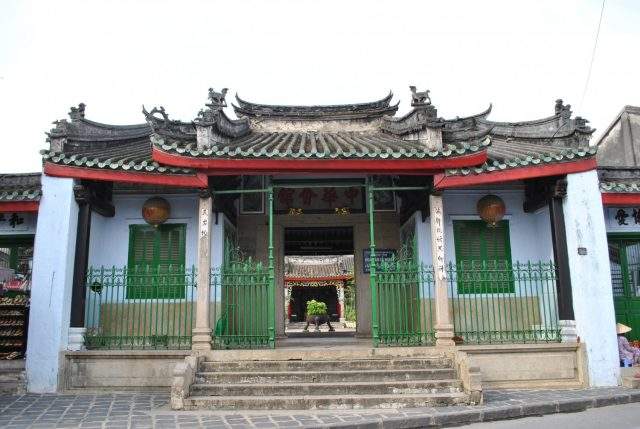
Entrance to Duong Thuong Assembly Hall (Photo ST)
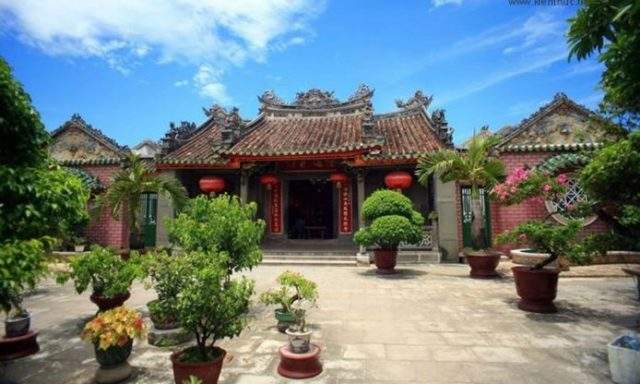
Quan Thuong Duong Association is considered to be born as early as 1741 (Photo ST)
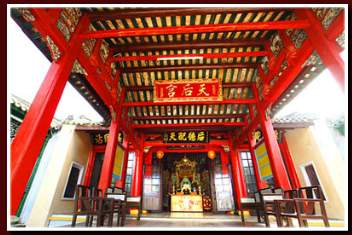
This is the place to worship Thien Hau Thanh Mau with contributions from the merchants of the Five States, which are Guangdong, Fujian, Hainan, Chaozhou, Gia Ung (Photo ST)
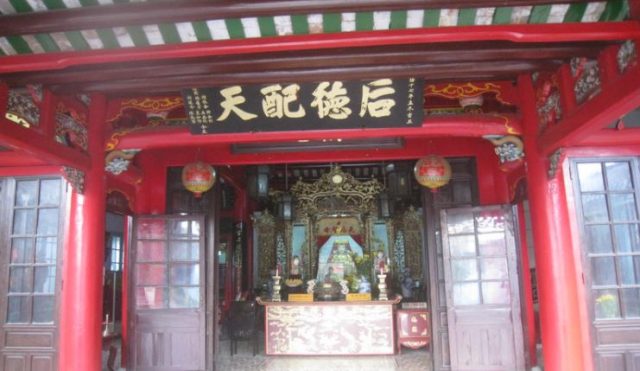
The internal structure of the hall is mainly wooden frame with a tall rafter system and magnificent lipstick paint (Photo ST)
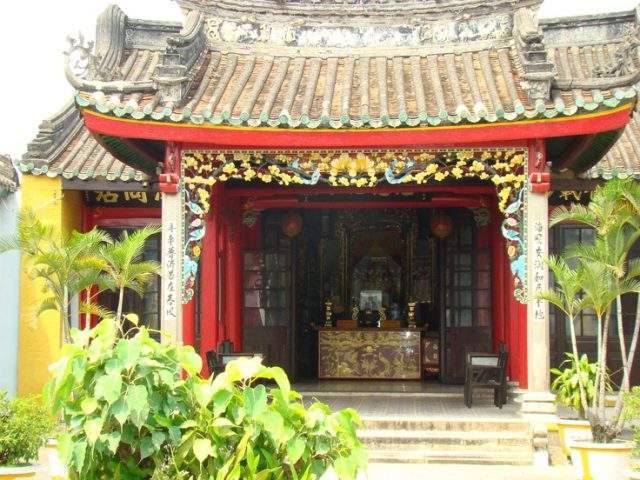
It is also mentioned with different names such as Le Nghia Pagoda, Giang Triet Hoi Quan, Quan Bang Ngu, and Chinese Assembly Quan as today (Photo ST).
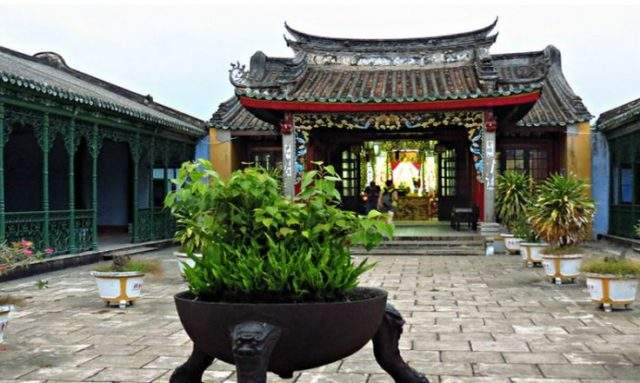
A corner of the Assembly Hall (Photo ST)
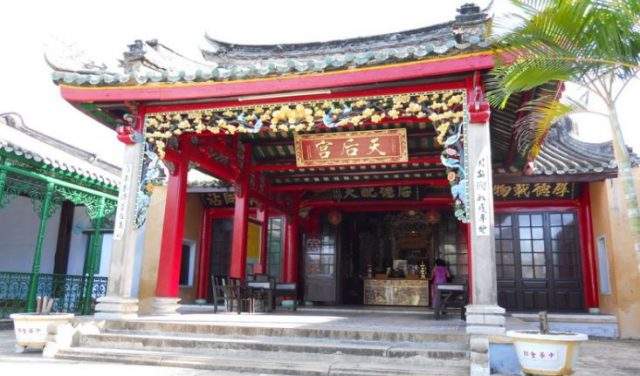
The Assembly hall always gathered a large number of Chinese people to come and worship, visit, activities (Photo ST)
